
The FIFA Women's World Cup is underway in France, and less than two weeks into the tournament, it has already provided the drama, action, joy and despair that all football fans around the world crave.
Recently re-elected as FIFA president, Gianni Infantino has vowed to "act seriously on women's football."
As a father of four daughters, "the pressure on me is high," Infantino told a FIFA event on the eve of the tournament in Paris. Half of the world's population is female, but for Infantino, "in my house it's 80 percent!"
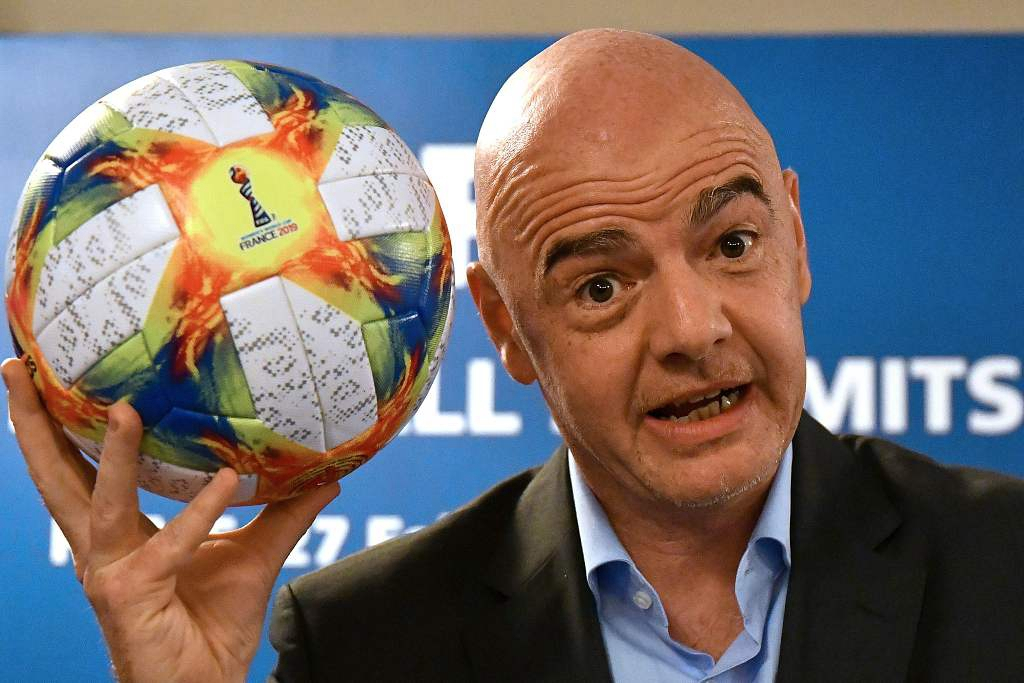
FIFA President Gianni Infantino holds a France 2019 match ball. /VCG Photo
The tournament, with close to a million tickets sold and an anticipated global audience in excess of one billion, is a sign of continuing progress in promoting women's football.
However, a look at the prize money on offer, FIFA budget and expanding gap with male footballers suggest the footballing body is not putting its money where its mouth is.
Contrasting fortunes for men and women at World Cups
Infantino, who received only three votes against his bid for re-election on June 5, can point to total prize money on offer at this World Cup doubling to 30 million U.S. dollars from the 2015 tournament.
But this pales in comparison to the 400 million U.S. dollars on offer to male teams playing in Russia last year.
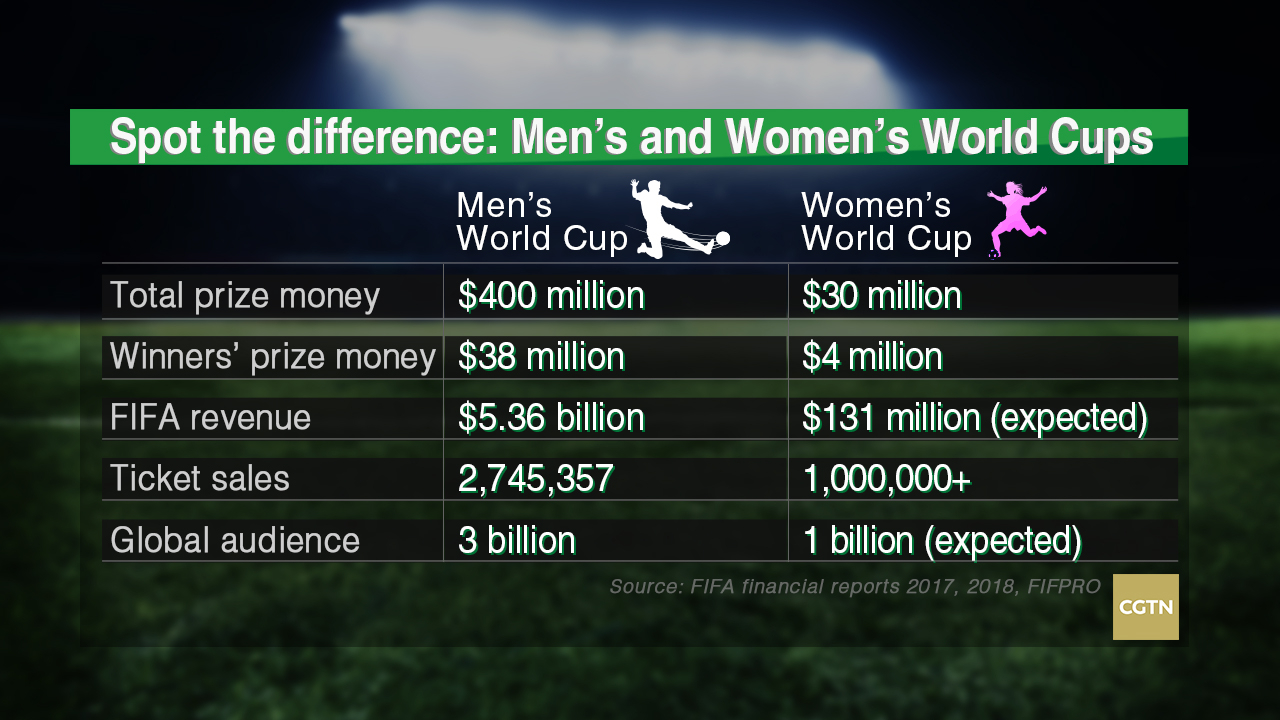
CGTN infographic
The winning women's team will receive four million U.S. dollars in prize money.
In contrast, the 2018 World Cup champions France received 38 million U.S. dollars. Their 20-year-old star player Kylian Mbappe earns four million U.S. dollars every 71 days at Paris Saint-Germain, according to Le Journal du Dimanche.
There is of course a lot more money in men's football. FIFA saw 5.36 billion U.S. dollars in revenue from Russia 2018.
FIFA's 2018 financial report estimates the 2019 women's tournament will bring in 131 million U.S. dollars in revenue.
But to increase that revenue, FIFA needs to spend more on promoting women's football.
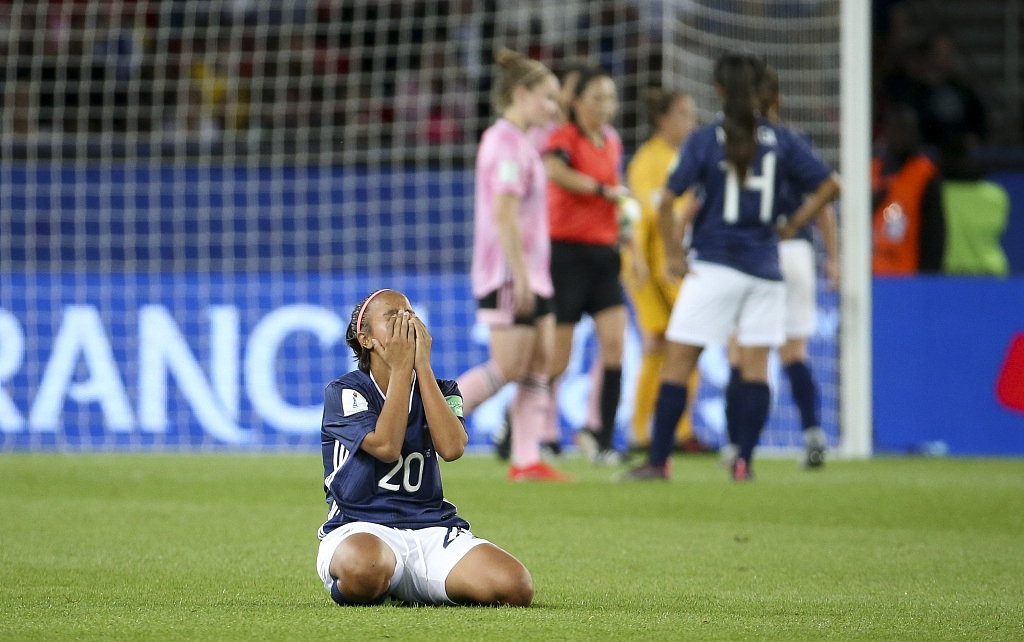
The Women's World Cup has already provided the drama and spectacle that all football fans crave. /VCG Photo
Outlay on women lags behind FIFA Museum, VAR spending
FIFA's latest financial report shows the footballing body aims to spend 14 million U.S. dollars on women's football development in 2020, out of a total budget of 578 million U.S. dollars for global football development and education.
The last few years have also seen relatively low spending on developing women's football, with FIFA granting a budget of only 24 million U.S. dollars over the period between 2015 and 2018.
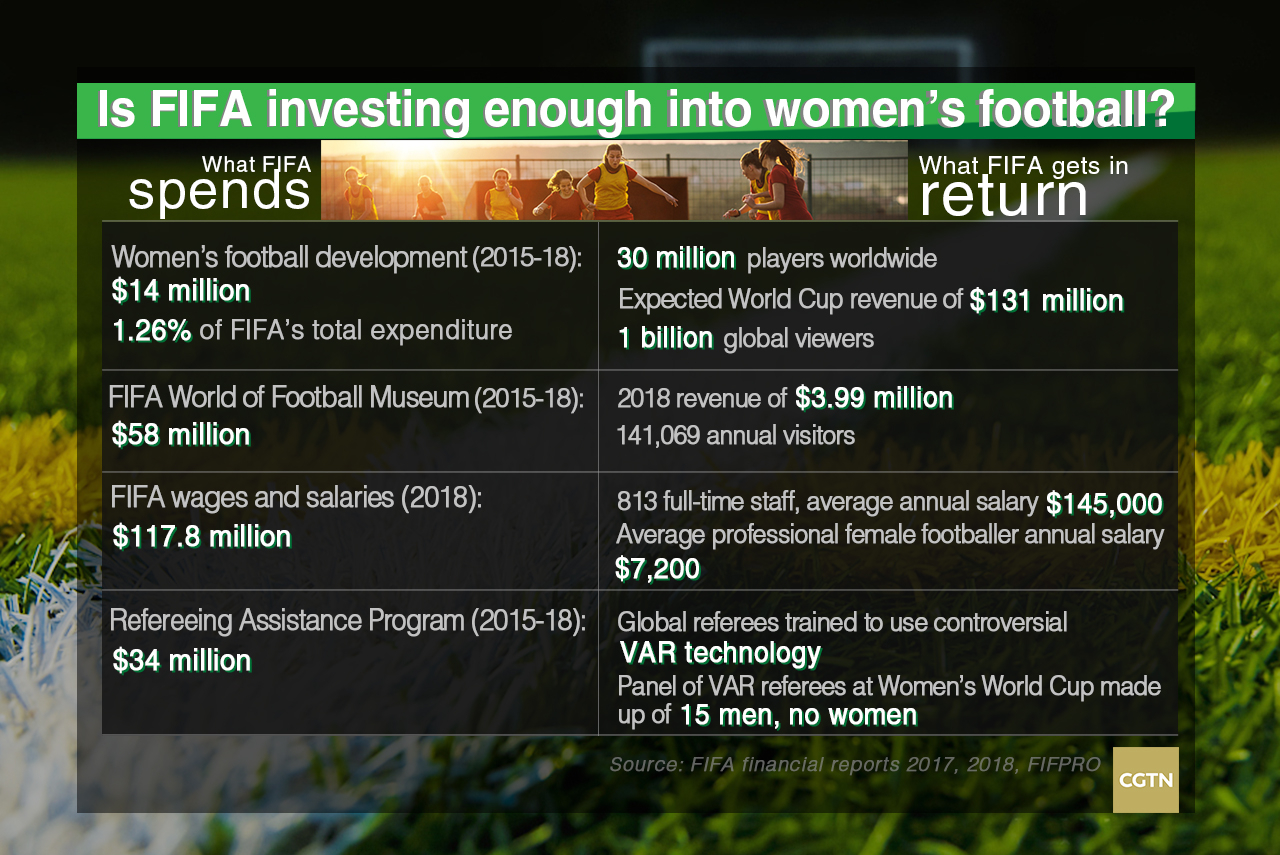
This same period saw FIFA spend 58 million U.S. dollars on its own World Football Museum in Zurich. The tourist attraction raked in less than four million dollars' worth of revenue for FIFA last year, suggesting it will likely be a less profitable long-term investment than women's football.
FIFA is also pumping more cash into developing its controversial VAR refereeing technology, with a 2015-18 spend of 34 million U.S. dollars on its Refereeing Assistance Program (RAP), a training scheme for referees and officials learning about the new tech.
Despite the RAP investment, which will get a further 16 million U.S. dollars in funding next year, FIFA's 15-man team of VAR referees at the Women's World Cup are all men.
Can sponsors lead the way in boosting women's game?
FIFA's spending on women's football is slowly increasing, but private companies also have a role to play in boosting the profile of tournaments like the Women's World Cup through sponsorship deals.
Sportswear giant Adidas said in March earlier this year that it would pay sponsored female teams the same bonus as the men if they won the tournament.
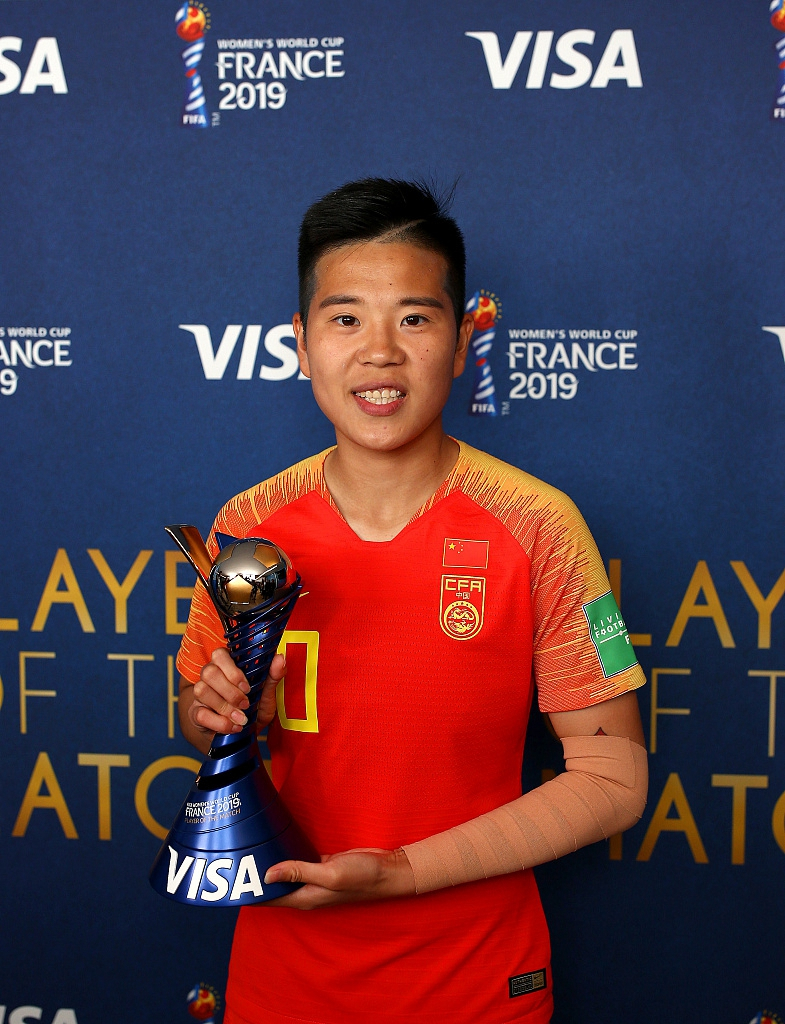
Ying Li of China poses with her VISA Player of the Match award after the group B match between South Africa and China, June 13, 2019, Paris, France. /VCG Photo
Payments platform VISA has also vowed to be a "catalyst for change" for women's football, with the tournament sponsor pledging to spend the same on marketing the competition as it did for the men's World Cup last year.
China's Wanda Group is a FIFA partner and one of the six main sponsors of the Women's World Cup. The conglomerate told media in March that the focus of its campaign for the tournament would be domestic, with an "overall goal of inspiring the next generation of footballers and fans" at grassroots football clubs and academies.
Nike, which is not an official sponsor or FIFA partner, perhaps puts it best in its advertising campaign for the tournament, telling the audience "don't change your dream, change the world."
While the women on the pitch let their football do the talking, FIFA will surely come under increasing pressure to provide more support for the young female stars of the future.

Copyright © 2018 CGTN. Beijing ICP prepared NO.16065310-3
Copyright © 2018 CGTN. Beijing ICP prepared NO.16065310-3